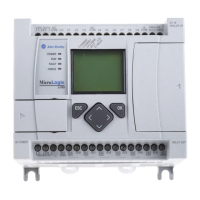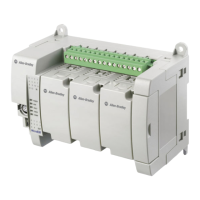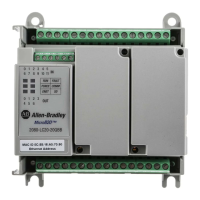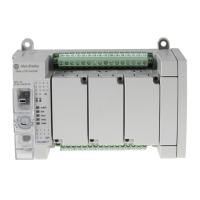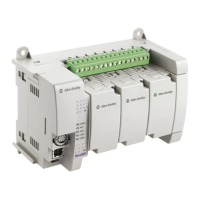Using Data Handling Instructions
9–11
Using COP
This instruction copies blocks of data from one location into another
. It uses no
status bits. If you need an enable bit, program an output instruction (OTE) in
parallel using an internal bit as the output address. The following figure shows how
file instruction data is manipulated.
Source Destination
File to File
Entering
Parameters
Enter the following parameters when programming this instruction:
• Source is the address of the first word in the file to be copied. Y
ou must use the
file indicator (#) in the address.
• Destination is the address of the first word in the file where the data is to be
stored. You must use the file indicator (#) in the address.
• Length is the number of wor
ds or elements
in the file to be copied. See the
table on the next page.
f e des na on f le ype s a n :
then you can specify a maximum length of:
I
th
ti
ti
i
t
i
(
)
Discrete Analog
Output 1 5
Input 2 8
Status 33 33
Bit 32 32
Timer 40 40
Counter 32 32
Control 16 16
Integer 105 105
Note The
maximum lengths apply when the source is of the same file type.
All elements are copied from the source file into the destination file each time the
instruction is executed. Elements are copied in ascending order.
If your destination file type is a timer, counter, or control file, be sure the source
words corresponding to the status elements of your destination file contain zeros.
Programming
efesotomasyon.com - Allen Bradley,Rockwell,plc,servo,drive
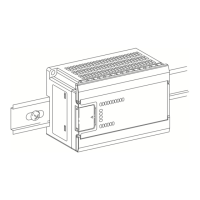
